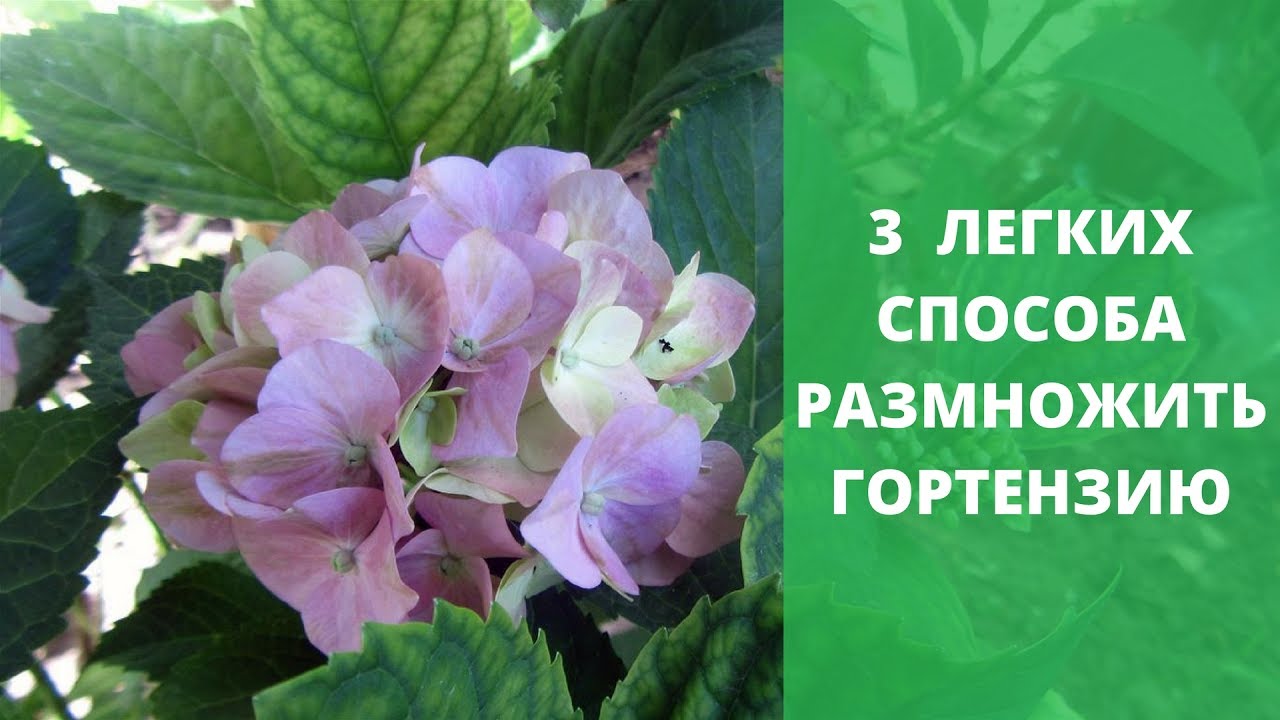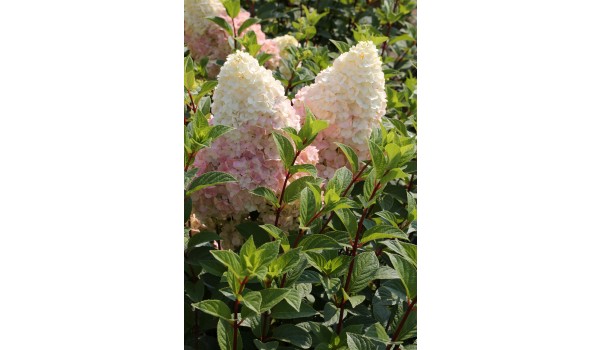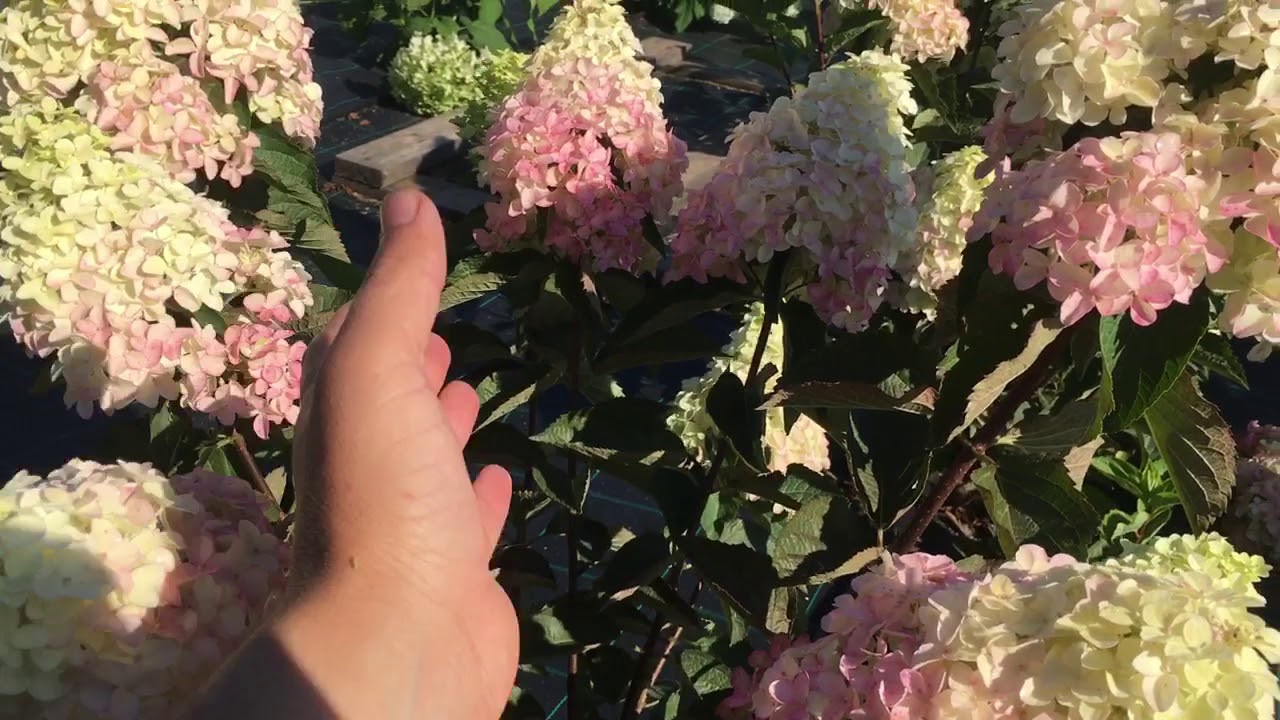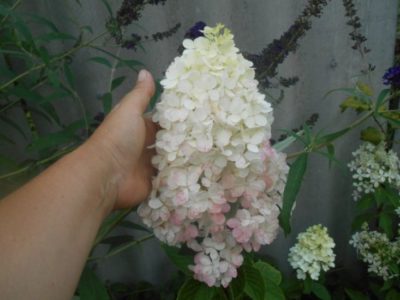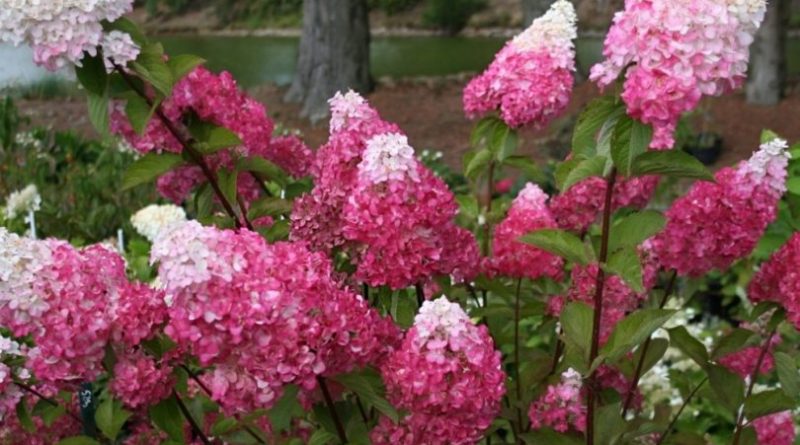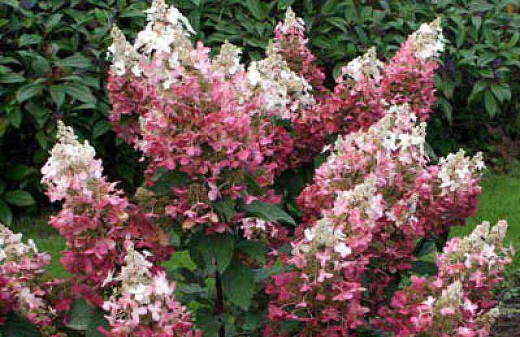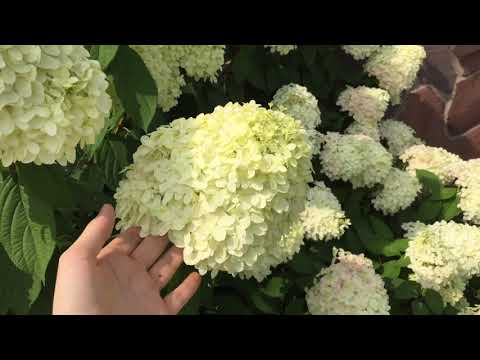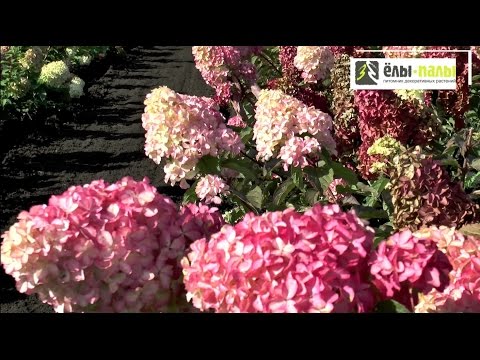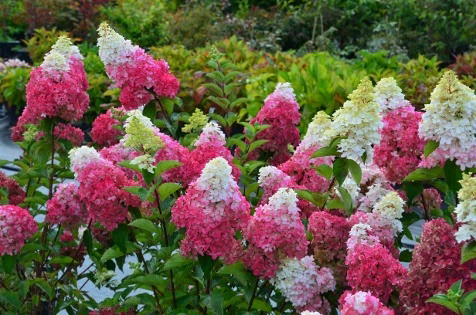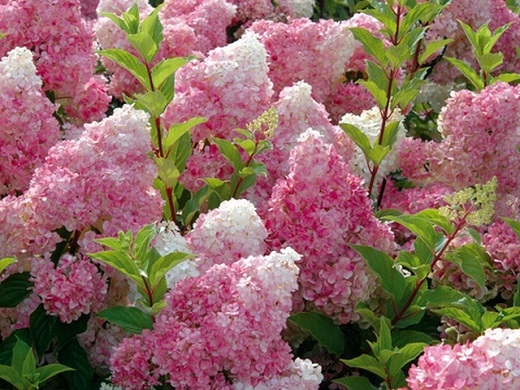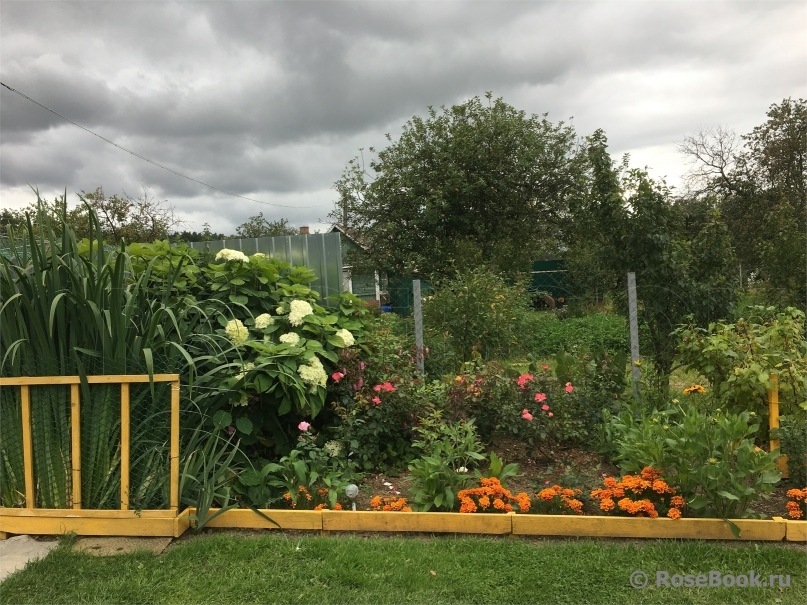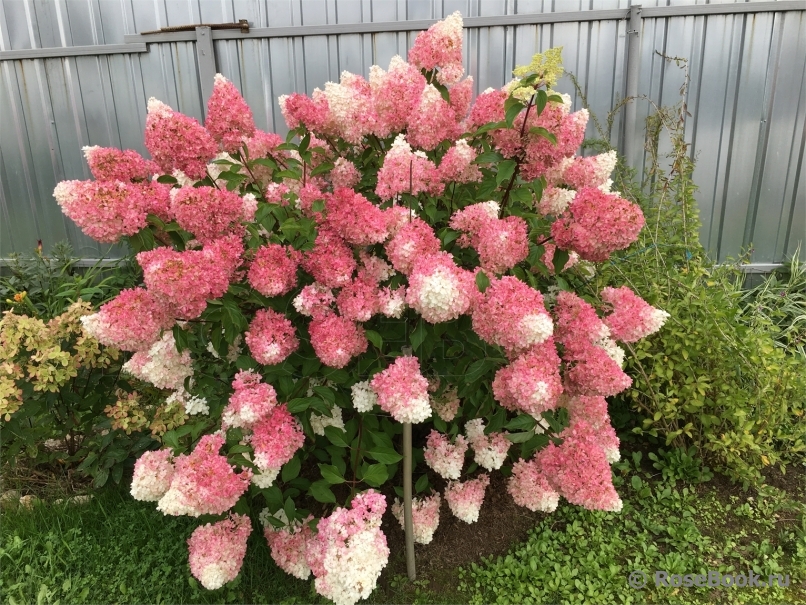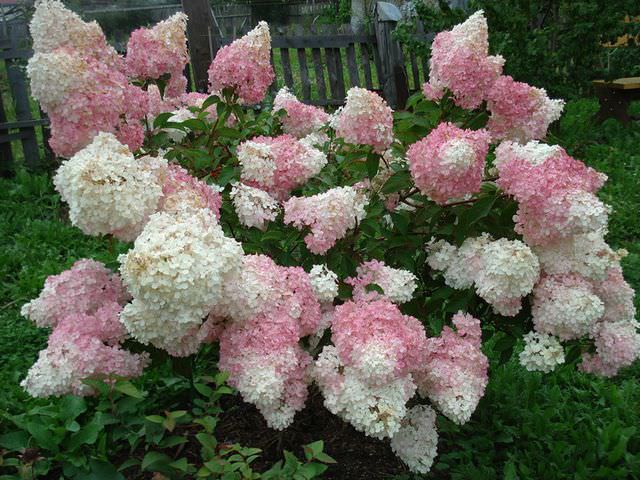Planting and further care of Fraise Melba panicle hydrangea
The most suitable time when the Frazi Melba hydrangea is planted in open ground is the second half of spring. During the summer months, the bush will have time to build up the root system and will better endure the first winter. Seedlings with a closed root system are planted throughout the season as they are less stressed and easier to adapt.

In the right place, the culture blooms profusely
Site selection and preparation
The area for planting hydrangea Frez Melba should be well lit for 6 or more hours a day. When a flower is planted in a shaded corner, the quality of its flowering deteriorates, and there is a risk of developing diseases.
Note! When placing several copies of a plant in the garden, leave a distance of 1.5 meters between them. Such a planting scheme will make it possible for the roots and the aerial part of the bushes to receive the required amount of nutrients and light.
The soil should have a slightly acidic reaction, although the flower feels good in acidic soil. Alkaline earth containing lime can harm hydrangeas. Experienced gardeners mix pine needles or high-moor peat into the soil. In any case, the Frize Melba hydrangea requires a fertile soil that is easily permeable to air and moisture.
How to plant
Hydrangea Fraise Melba is planted in a specific sequence. It is recommended to adhere to the following steps:
- Dig a landing hole 50 cm in diameter and 2 bayonets deep.
- Pour a drainage layer of broken brick or expanded clay 15 cm high at the bottom of the pit.
- On top of the drainage, place a layer of nutritious soil mixture of sod land, peat and sand.
- Carefully transfer the seedling into the planting pit, placing it vertically and carefully straightening the roots.
- Fill the voids with soil, leaving the root collar open.
- Compact the soil with your hands and form a near-stem circle.
- Water the plant abundantly with settled water.
Watering and feeding
Hydrangea Melba prefers moderately moist soil without excessive moisture stagnation. In warm sunny weather, 1 bucket of softened water is poured under the bush twice a week (in the evening). During the rainy season, watering is reduced, focusing on the level of soil moisture.
The flower is fed according to the scheme:
- the first spring fertilizer is humus;
- after 2-3 weeks - a phosphorus-potassium preparation;
- further, every 2 weeks the application of mineral and organic compounds is alternated.
Pruning
In order for Fraz Melba to develop normally, pruning is carried out several times a season. Each of the procedures has its own purpose.
In spring and autumn, sanitary pruning of bushes is recommended. During the event, non-viable shoots are removed, as well as twigs directed inside the crown and thickening it.
Additional Information! In the first autumn after planting the plant in open ground, all the shoots of the bush are shortened to 3 buds. In subsequent years, this procedure is carried out in the spring before the start of the movement of the juice.
A mature bush over 6 years old requires regular rejuvenating pruning, in which all old branches that do not form buds are completely eliminated.
Preparing for winter
The Fries Melba variety is not afraid of cold weather and is characterized by increased frost resistance. In preparation for the winter rest, all remaining foliage is removed from the stems of the hydrangea and the bush is spud. In harsh climatic conditions, additional feeding with potassium salt with superphosphate is recommended. The plant is mulched and covered with a non-woven cloth.
Important! The introduction of nitrogenous fertilizers is strictly not recommended, as it can provoke the growth of leaves and shoots
Hydrangea Fries Melba - variety description
A tree-like shrub bred in France, lovingly named hydrangea pan little fraise - a small cup of strawberries. The baby reaches 2 meters in height, but this does not bother lovers of a delicate and beautiful plant.
Hydrangea paniculata "fries melba" in translation means strawberry dessert or "strawberry with cream". The flower owes its name to the shape and uneven coloration of the panicle. Cone-shaped inflorescences are for a long time in that phase when the bottom acquires a red tone, and the upper part remains milky white. Color intensity varies from pure white to almost red panicles on one bush.
Description of the variety:
- Arboreal dicotyledonous flowering shrub. The height of an adult plant is from 1.5 to 2.2 mm. The plant is deciduous.
- The leaves are serrated, from dark green to blue in color. The shape of the leaf is oval, elongated, in the middle with a bend in a boat, the size is medium.
- Inflorescences are collected in balls at the end of the shoots, paniculate. The size of flowers reaches half a meter.
- Frost resistance is high. Hydrangea pan little fraise tolerates frosts down to -35 without damage. In regions with a lower temperature, the shrub is grown using a covering technology.
Unlike most of the genus hydrangea, which grow well in the shade, Fries Melba easily tolerates the open sun. The variety is resistant to most diseases. A feature of Hydrangea Fries Melba is the uprightness of the bush. The plant is tough, does not fall apart on the sides without an additional garter.
Features of hydrangea
- Hydrangea is rarely attacked by aphids.
- Hortense hardly gets sick. This can only happen if it is planted in the wrong place, feeds incorrectly, or grows in an area where it is exposed to direct sunlight.
- It tolerates winter frosts very well.
- Not demanding on the composition of the soil.
- The color of the inflorescences can vary depending on the duration of flowering. The pink flowers turn to white and the white to pink.
 Many summer residents began to plant this particular variety of hydrangeas in their garden, which decorate any landscape composition with their lush bright color. Hydrangea looks great next to phlox, cuff and highlander. It is not recommended to plant it near birches, as it very much takes moisture from the soil, and hydrangeas really need water. You can combine several types of hydrangeas in one composition, it looks very beautiful. Thanks to its rigid branches, the bush does not disintegrate, but keeps its shape. With proper care, hydrangea will delight you with its flowering and variety of colors for many years.
Many summer residents began to plant this particular variety of hydrangeas in their garden, which decorate any landscape composition with their lush bright color. Hydrangea looks great next to phlox, cuff and highlander. It is not recommended to plant it near birches, as it very much takes moisture from the soil, and hydrangeas really need water. You can combine several types of hydrangeas in one composition, it looks very beautiful. Thanks to its rigid branches, the bush does not disintegrate, but keeps its shape. With proper care, hydrangea will delight you with its flowering and variety of colors for many years.
Hydrangea diseases
Fortunately for many summer residents and gardeners, this variety is rarely exposed to diseases and pests, but like all plants, it can get sick with a fungal or viral infection, such as:
- Gray or white rot;
- Powdery mildew;
- Tracheomycosis.
These diseases can be fought with fungicides, both as a treatment and as a prophylaxis.
If the leaves of the shrub began to fall off and dry, then it is imperative to check the plant for pests. Hydrangea can be affected by such pests:
- Aphid;
- Bug;
- Spider mite;
- Weevil;
- Snail;
- Nematodes.
To rid the plant of pests, you need to spray it with insecticides or use a soap solution.
Hybrid history and technical data
This type of hydrangea Fraise Melba Renba bred in the middle of the 20th century. Jean Reno. Then the breeding activity of scientists concentrated on obtaining the vanilla paniculata variety. Long-term experiments ended in 2014 with the creation of the Fraise Melba hydrangea hybrid, which immediately gained worldwide popularity. The reason for this is the ability to breed it in different climatic conditions.
Technical characteristics of the plant:
- The height of the bush ranges from 1.7 to 2.1 m. The branches are hard, almost straight, painted in a burgundy color with a brown tint.
- Leaves are ordinary, narrow, with a serrate structure of raised edges, egg-shaped. They form a "boat". Painted in dark shades of green.
- The inflorescence looks like a pyramid. The average length is 0.3-0.4 m, and with appropriate care, the size increases to 0.45-0.55 m.
Hydrangea Fries Melba
Description of colors:
- they are densely located along the entire cone;
- the initial milky color of the petals becomes pink at first, and then acquires a crimson color;
- when blooming, the inflorescence retains white tones;
- in early autumn, some types of this hybrid change the color of the tips of the petals.
This hydrangea blooms at the end of July, and the process continues until late autumn. Fraz Melba hydrangea is not afraid of severe cold weather. This variety grows rapidly. To obtain large inflorescences, the summer resident must cut off the hybrid in early spring.
Important! If the petals of a plant are dried under the rays of the sun, then they retain their original aroma for a long time.
Growing
The growing conditions that need to be provided for panicle hydrangea specifically depend on its variety. However, technically, the soil should be fertile and necessarily acidic. If you are not sure that the soil has the correct pH, or you need to acidify it, you can pour sour peat under the plants and dig up the soil. We will obtain the same effect by feeding with appropriate preparations or mulching with bark or coniferous needles.
Having found an ideal place for a plant - sunny or light partial shade (it blooms less abundantly), then the shrub will grow correctly and have magnificent flowers. On very hot days, hydrangea leaves and flowers can wilt, so regular and abundant watering is required. Otherwise, faded and wilted inflorescences will be in this form until the end of the season. We fertilize the plant until July with a frequency of once every two weeks with special fertilizers for hydrangeas that do not contain lime. From July, the shrub begins to form flower buds, which will bloom in the next season. In this regard, it should be covered for the winter. Hydrangea paniculata requires pruning, which is carried out in the spring, and in the case of this species it consists in removing faded inflorescences. The so-called anti-aging pruning of shoots is carried out every few years.





